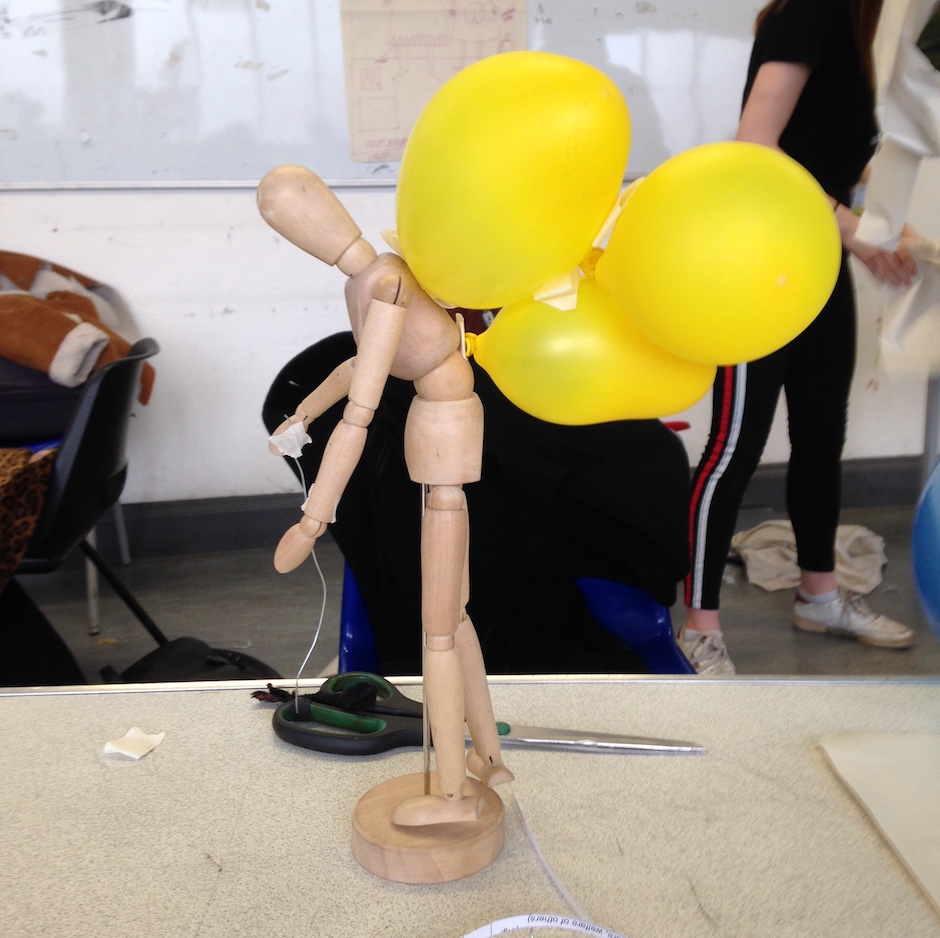Creative spaces for effective learning

Contextual Background
I am interested in ways that my practice as a theatre designer informs my teaching of design to BA students on the Performance course at LCF. We occupy a new building in Stratford which has brought gifts in the form of a beautiful structure with amazing views in an interesting community and challenges in spaces that are yet to be populated and enlivened. How can we create interesting spaces and spatial relationships within new and sometimes quite blank rooms to boost the teaching exchange?
Evaluation
Currently, my teaching rooms are quite varied, and it is more often the numbers of students that dictate the nature of this space, rather than the subject matter of the class. As design teaching is felt not to have specific technical needs such as cutting tables or make-up chairs, my sessions are seen as more flexible when it comes to timetabling places for them. On the whole the rooms I teach in have what I regard as a traditional set-up. The students recognise this and settle accordingly. As Seifert and Sutton (2007) observe:
‘Many class activities take on communication patterns that class members learn to expect without even being reminded. Each pattern is a participation structure, a set of taken-for-granted rights and responsibilities expected from students and teacher during an activity…. …. In principle, a host of participation structures are possible, but just a handful account for most class activities.’ Siefert and Sutton, (2007)
In a way, I quite enjoy the challenge of adapting a room to suit a session (within reason) as it gives me two opportunities:
- To subvert the space, finding an unexpected way of organising the furniture, or placing myself in a different relationship to the students to wake everyone up a little.
- To enlist the students help in re-modelling the room. Sometimes this is about physically warming them up, giving them some ownership of the space and engaging them in a joint endeavour

Moving forwards
I have thought about these strategies with a new focus after a tutorial with Linda Aloysius where our discussion helped me realise that this process of considering the space mapped to my practice as a set designer. Part of this work is about creating spaces to hold a story and its tellers, manipulating the dynamics of the actor/audience relationship. This instinct and thought process related suddenly to my habit of rearranging the classroom, sometimes as a collaborative act of improvisation with the students.

This encouraged me to think more carefully about how effective this was and how to extend this approach. I decided to use an upcoming session on text analysis as a study. The text in question was developed for a dance piece and was quite abstract so it needed an open-minded approach from students who may be more used to analysis in English literature formats. This was in a standard classroom, so I moved the desks to make a space in the middle of the room and invited the students to begin the session sitting on the floor with me in a circle. I explained that this was to foster a sense of adventure and help us to focus on storytelling and our bodies. I could see the students leaning in and they remained intrigued and excited during the session.

The space felt quite cosy and protected, and the students looked visibly relaxed. Later, I asked the students to join me, if they felt comfortable doing so, in a Latin dance inspired movement sequence, to give them a brain break after some in depth discussion and analysis. I was worried that they would feel too self-conscious and refuse, but they helped me to clear the desks again and joined in!
Perhaps, as Reynolds remarks
” the dynamics of classroom seating can be modified in relatively simple ways that are capable of having a significant impact on student learning and – presumably – the overall quality of the student experience.” Reynolds R. ( 2011)
I think that initial connection and security helped them to be more open minded and better prepared to collaborate and discuss together. In a more open plan space, such as the heart spaces at LCF, I think this would have been much less successful and a different solution would need to be found. However, it has inspired me to be consider this element of my teaching in a new light.
Bibliography
Reynolds, R. (2011) Psychogeography and its relevance to inclusive teaching and learning development: why it matters where students choose to sit PDF Available from ualresearchonline.arts.ac.uk
Seifert, K. & Sutton, R. (2007) Contemporary Educational Psychology. Wikibooks. Available from http://en.wikibooks.org/wiki/Contemporary_Educational_Psychology

